Japan, Take 2
I don't know if I've mentioned this yet, but traditionally, Japanese aristocracy would use the 72 micro seasons as a guide to change their outfits. I originally thought about following that guide as well, but quickly realized changing my outfit once every 4-5 days is hygienically unsound. So that's not going to happen.
I found no chickens, so no photos of hens and eggs.
I did get to go on a tour today around East Osaka, visiting small local crafts workshops. It was surprisingly tiring, spending about 10 hrs traveling to 6 very different types of workshops to view their products and working conditions. We got a bunch of souvenirs out of it, and now I have a very heavy hollow metal "pen stand" I could possibly use as a self-defence weapon. I did get to weld the stand to the bottom, which was neat.
Our first stop was a place that
January 30-February 3 鶏始乳 The Hens start laying eggs
February 03, 2018
|
Higashi Osaka
I don't know if I've mentioned this yet, but traditionally, Japanese aristocracy would use the 72 micro seasons as a guide to change their outfits. I originally thought about following that guide as well, but quickly realized changing my outfit once every 4-5 days is hygienically unsound. So that's not going to happen.
I found no chickens, so no photos of hens and eggs.
I did get to go on a tour today around East Osaka, visiting small local crafts workshops. It was surprisingly tiring, spending about 10 hrs traveling to 6 very different types of workshops to view their products and working conditions. We got a bunch of souvenirs out of it, and now I have a very heavy hollow metal "pen stand" I could possibly use as a self-defence weapon. I did get to weld the stand to the bottom, which was neat.
Our first stop was a place that
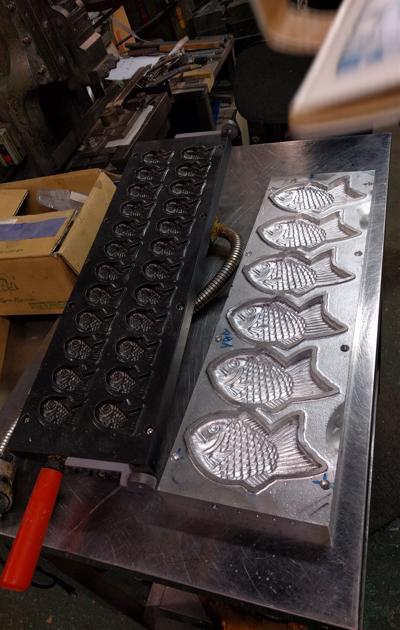
manufactured burner plates for things like Taiyaki and Takoyaki. The workshop was small for sure, and bloody cold. Remember, no central heating. And I guess sure, when you're actually working there and firing up torches to weld metals together and not just a visiting tourist, it wouldn't feel nearly as cold. Souvenir: small copper dog-tag-like piece of metal. To be used as a keychain, I guess?
The second stop was the place I was most exited to visit on the tour: A Doll Manufacturer. They specialized in the traditional Hinamatsuri (Girl's Day) display doll sets, and we got to see some of the specialists working on construction. They have specialists for each part of the doll, so only a wig master works on the hair, a props specialist works on the props, and so forth. Most of the fabric they use is also especially made for doll-clothing scale, and of course, super expensive. Cutters cut the fabric to make sure the prints on the fabric line up well with the doll body, so really just the same as real
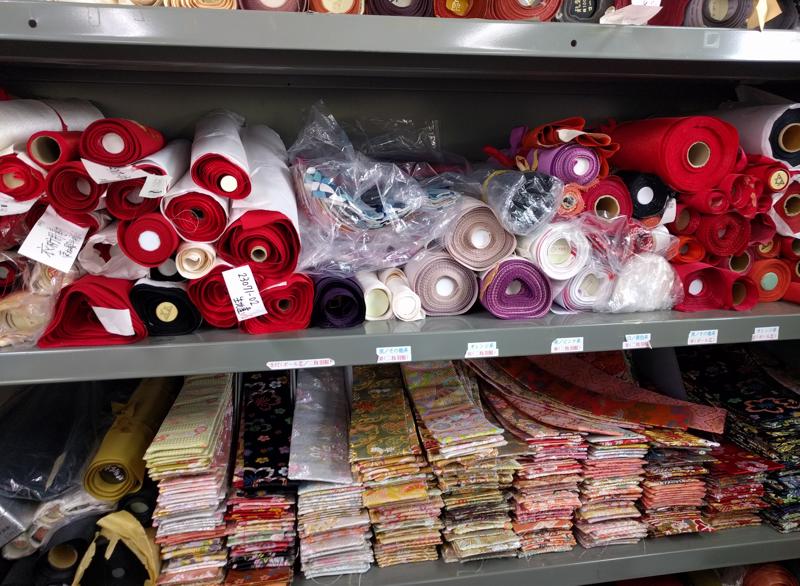

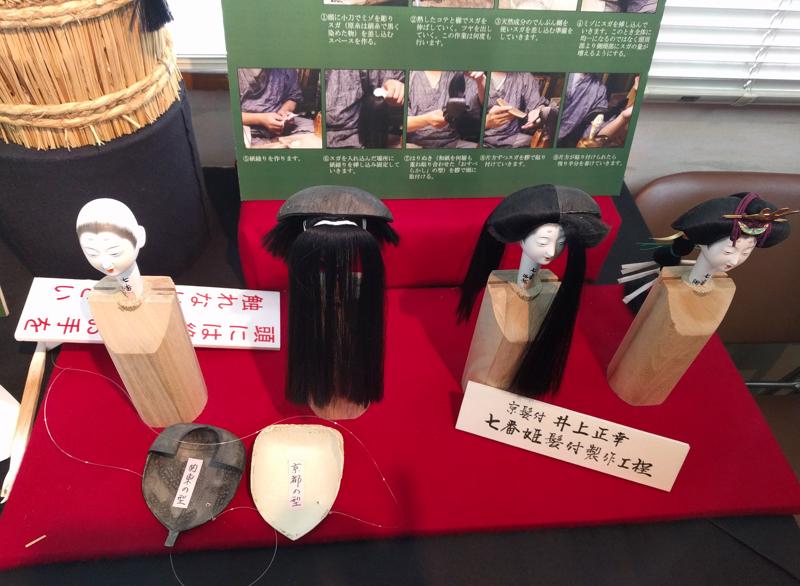
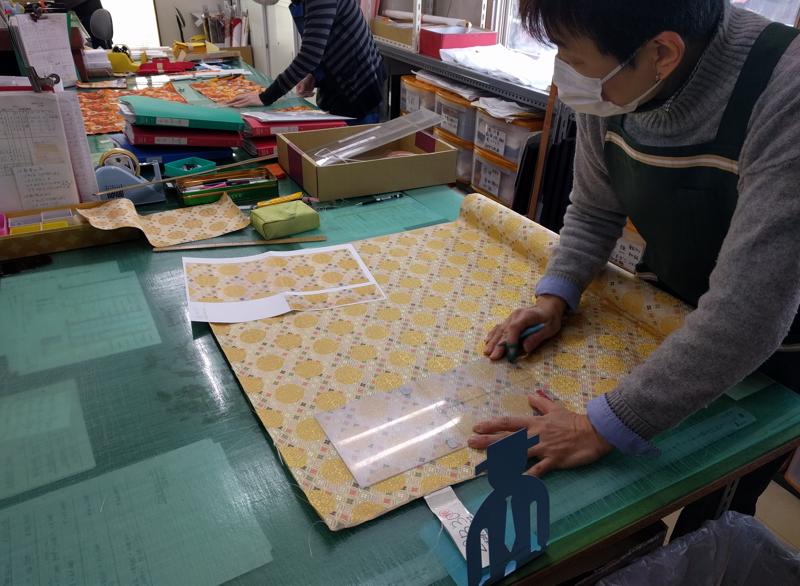
clothing and nothing surprising. It actually looked really fun and I desperately wanted to try putting a doll together too, after watching a worker nail-gun down layer after layer of a doll's kimono collars.
One fun tidbit: the wig shapes are different for Kanto-styled dolls and Kyoto-styled dolls. The wig base for Kyoto-styled dolls do not have the pre-formed front part of the wig, because that allows the real hair that is put on top to be hand-styled, rather than just take the base's shape. Oh how very Kyoto.
Our third stop was a place that manufactured coloured wire. They made colour plastic-covered wire of various core strength, including a type of annealed aluminum core type for crafting. They started out supplying the crafts store Tokyu Hands, and it really took off.
The fourth stop was a place that manufactured nuts. They had a giant nut on the side of their building. The manager who was giving us the tour was so excited to show us the way they marked the side of their binders with a diagonal line as a quick visual way of making sure your binders were in order. We all took photos of their binders.
Stop five was where we welded our metal pen holders. I must have been exhausted by this point because I'm realizing now that I have
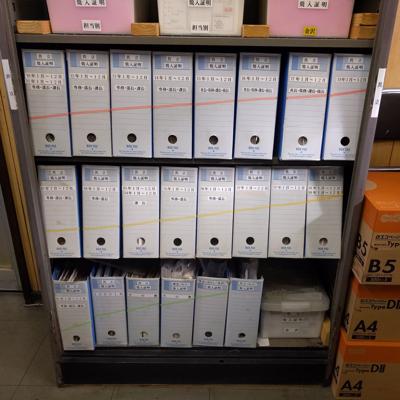

no photos of this place. The best part was that they also gave us cups of udon to send us on our way. It was probably the best part of the day, because that afternoon snack came at just the right time and I was starving. Now I'm sad I didn't photograph the tiny cup of udon.
Our last stop was a place that cut sheet metal, and I couldn't hear the majority of the tour as I was shuffled into a corner and beside a computerized water bath die cutter. I heard lots of water. They let us make our own pin badge. I drew Okon (haha~), or a daikon (radish).
I'm really glad I got to take part of this tour, and that the doll stop was so early so I could actually focus and pay attention when I was there. Sadly there wasn't enough time nor opportunity for me to ask any more questions regarding the fabric and motif choice of the doll kimono.
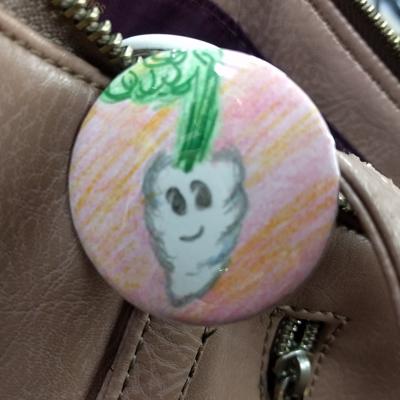
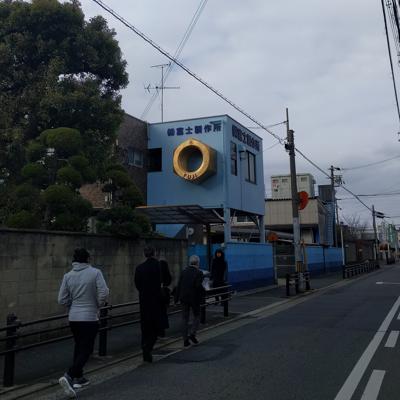
1.
Foreword
2.
72 Seasons of Japan: 雪下出麦 Beneath the Snow the Wheat Sprouts (January 1-5)
3.
Pheasants are like peacocks, right? 雉始雊 The Pheasant's First Calls (January 16-20)
4.
January 21-24 款冬華 The Butterbur flowers
5.
January 25-29 水沢腹堅 Mountain Streams Freeze
6.
January 30-February 3 鶏始乳 The Hens start laying eggs
7.
February 4-8 東風解凍 Spring winds thaw the ice
8.
February 9-13 黄鶯睍睆 The Nightingale Sings
9.
February 14-18 魚上氷 Fish Rise from the Ice
10.
February 19-23 土脉潤起 The Earth becomes Damp
11.
February 24-28 霞始靆 Haze First Covers the Sky
12.
March 1–5 草木萌動 Plants Show First Buds
13.
March 6–10 蟄虫啓戸 Hibernating Creatures Open their Doors
14.
March 11–15 桃始笑 The First Peach Blossoms
15.
March 16–20 菜虫化蝶 Leaf Insects become Butterflies
16.
March 21-25 雀始巣 The Sparrow Builds her Nest
17.
March 26-30 櫻始開 The First Cherry Blossoms
18.
March 31-April 4 雷乃発声 Thunder Raises its Voice
19.
April 5-9 玄鳥至 The Swallows Arrive
20.
April 10-14 鴻雁北 Geese Fly North
21.
April 15-19 虹始見 The First Rainbow Appears
22.
April 20-24 葭始生 The First Reeds Grow
23.
April 25-29 霜止出苗 The Frost Stops; The Rice Grows
24.
April 30- May 4 牡丹華 The Tree Peony Flowers
25.
May 5-9 蛙始鳴 The First Frogs Call
26.
May 10-14 蚯蚓出 The Earth Worms Rise
27.
May 15-20 竹笋生 Bamboo Shoots Appear
28.
May 21-25 蚕起食桑 The Silk Worm Awakes and Eats the Mulberry
29.
May 26-30 紅花栄 The Safflower Blossoms
30.
May 31-June 5 麦秋至 The Time for Wheat
31.
June 5 - June 9 蟷螂生 The Praying Mantis Hatches
32.
June 10 - 15 腐草為螢 Fireflies rise from the Rotten Grass
33.
June 16 - 20 梅子黄 The Plums turn Yellow
34.
June 21 - June 25 乃東枯 The common Self-Heal Dries (Summer Solstice)
35.
June 26 - June 30 菖蒲華 The Iris Flowers
36.
July 1 - July 6 半夏生 The Crow-dipper Sprouts
37.
July 7 - July 11 温風至 Hot Winds Blow
38.
July 12 - July 16 蓮始開 The First Lotus Blossoms
39.
July 17 - July 21 鷹乃学習 The Young Hawk Learns to Fly
40.
July 22 - July 27 桐始結花 The First Paulownia Fruit Ripen
41.
July 28 - Aug 1 土潤溽暑 Damp Earth Humid Heat (Major Heat)
42.
Aug 2 - Aug 6 大雨時行 Heavy Rain Showers
43.
Aug 7 - Aug 11 涼風至 A cool Wind blows (First Autumn)
44.
Aug 12 - Aug 16 寒蝉鳴 The Evening Cicada Sings
45.
Aug 17 - Aug 22 蒙霧升降 Thick Fog Blankets the Sky
46.
Aug 23 - Aug 27 綿柎開 The Cotton Lint Opens (Limit of Heat)
47.
Aug 28 - Sept 1 天地始粛 Earth & Sky Begin to Cool
48.
Sept 2 - Sept 6 禾乃登 The Rice Ripens
49.
Sept 7 - Sept 11 草露白 Dew Glistens White on Grass
50.
Sept 12 - Sept 16 鶺鴒鳴 Wagtails Sing
51.
Sept 17 - Sept 21 玄鳥去 Swallows Leave
52.
Sept 22 - Sept 27 雷乃収声 Thunder Ceases (Autumn Equinox)
53.
Sept 28 - Oct 2 蟄虫坏戸 Insects hole up Underground
54.
Oct 3 - Oct 7 水始涸 Farmers Drain Fields
55.
Oct 8 - Oct 12 鴻雁来 The Geese Arrive
56.
November 19
Share your travel adventures like this!
Create your own travel blog in one step
Share with friends and family to follow your journey
Easy set up, no technical knowledge needed and unlimited storage!